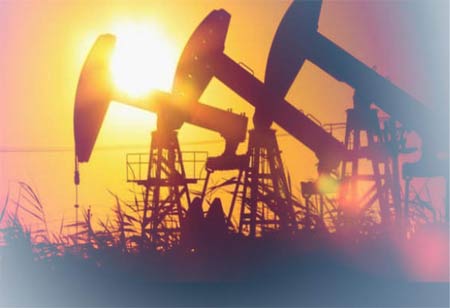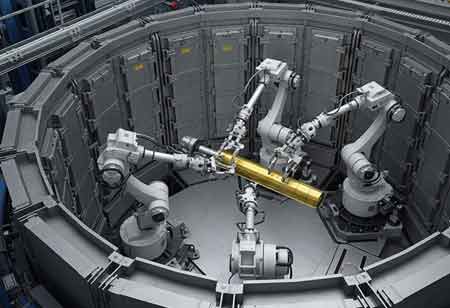CLOSE
Specials
I agree We use cookies on this website to enhance your user experience. By clicking any link on this page you are giving your consent for us to set cookies. More info
Be first to read the latest tech news, Industry Leader's Insights, and CIO interviews of medium and large enterprises exclusively from Energy Tech Review
Thank you for Subscribing
Unlocking the Potential of Energy Storage in the Asia-Pacific Region
The energy storage market in the Asia-Pacific (APAC) region is driven by rising demand for renewable energy, supportive government policies, and technological advancements in battery systems.

By
Energy Tech Review | Wednesday, November 20, 2024
Stay ahead of the industry with exclusive feature stories on the top companies, expert insights and the latest news delivered straight to your inbox. Subscribe today.
The energy storage market in the Asia-Pacific (APAC) region is driven by rising demand for renewable energy, supportive government policies, and technological advancements in battery systems. As APAC economies prioritize reducing fossil fuel dependency and pursue ambitious carbon reduction goals, energy storage solutions (ESS) have become integral to meeting these targets. Projected to grow significantly in the coming years, the APAC energy storage market benefits from various incentives, including government subsidies, tax breaks, and the plummeting cost of battery technology. Countries like China, Japan, South Korea, and Australia are at the forefront of this expansion, making substantial investments to advance their ESS capabilities and contribute to the sector’s growth.
Multiple factors are propelling this adoption of ESS across APAC. Renewable energy integration plays a crucial role, as countries with ambitious solar and wind targets increasingly rely on ESS solutions to stabilize grids, manage energy intermittency, and bolster energy security. Government initiatives further encourage this growth with policies that include dedicated ESS targets, tax incentives, and subsidies. For example, China’s 14th Five-Year Plan (2021-2025) highlights ESS support, while Australia’s Battery of the Nation initiative signals a similar commitment to energy storage. Grid modernization and reliability demands also drive ESS implementation, as rapid urbanization and industrialization in the region stress existing infrastructures. Energy storage systems help address peak loads, reinforce resilience, and ensure reliable power in rural and island regions prone to outages. In the long run, significant cost reductions in battery technology, particularly lithium-ion batteries— which have seen an over 80 percent price drop in the past decade—make ESS economically feasible for broader applications. Emerging technologies like sodium-ion batteries hold the potential for further cost efficiencies.
Several energy storage technologies currently dominate the APAC market. Lithium-ion batteries are widely deployed, particularly in China, Japan, and South Korea, due to their high energy density and efficiency. Sodium-ion batteries are also gaining traction, with Chinese companies like CATL investing in this safer, lower-cost alternative. Although it is limited by site availability, pumped hydro storage remains a standard solution for large-scale, long-duration applications, particularly in topographically suitable regions like Australia, Japan, and India. Flow batteries, such as vanadium redox flow batteries, are gaining attention in Japan and Australia for their stability and scalability. Hydrogen-based storage is another advancing field, notably in Japan and South Korea, where green hydrogen is being developed as both a storage medium and a clean fuel source, supporting the region’s hydrogen economy.
Technological advancements like artificial intelligence (AI) and data analytics are increasingly integrated into ESS to enhance efficiency, anticipate demand patterns, and support predictive maintenance. Hybrid storage solutions that combine different technologies, such as lithium-ion batteries with pumped hydro or hydrogen, are emerging to provide flexibility, reliability, and costeffectiveness by balancing short- and long-duration storage needs. As ESS deployment grows, sustainability has also become a priority, with a strong focus on recycling and promoting a circular economy, especially for lithiumion batteries. Additionally, hydrogen storage is gaining traction in industrial applications as a seasonal storage solution, supported by the declining costs of green hydrogen production. Long-duration storage technologies like flow batteries and gravity-based storage continue to make strides, further diversifying the ESS landscape. To reduce import dependency and stimulate job creation, countries such as India and Indonesia invest in domestic ESS manufacturing capabilities, establishing battery production facilities to support local markets.
With solid governmental backing, declining technology costs, and an increasing emphasis on renewable energy integration, the APAC energy storage industry is set for significant growth. Through these strategic investments and commitments, APAC has the potential to emerge as a global leader in energy storage, offering valuable insights and innovations that could serve as models for other regions.

Copyright © 2025 Energy Tech Review. All rights reserved






